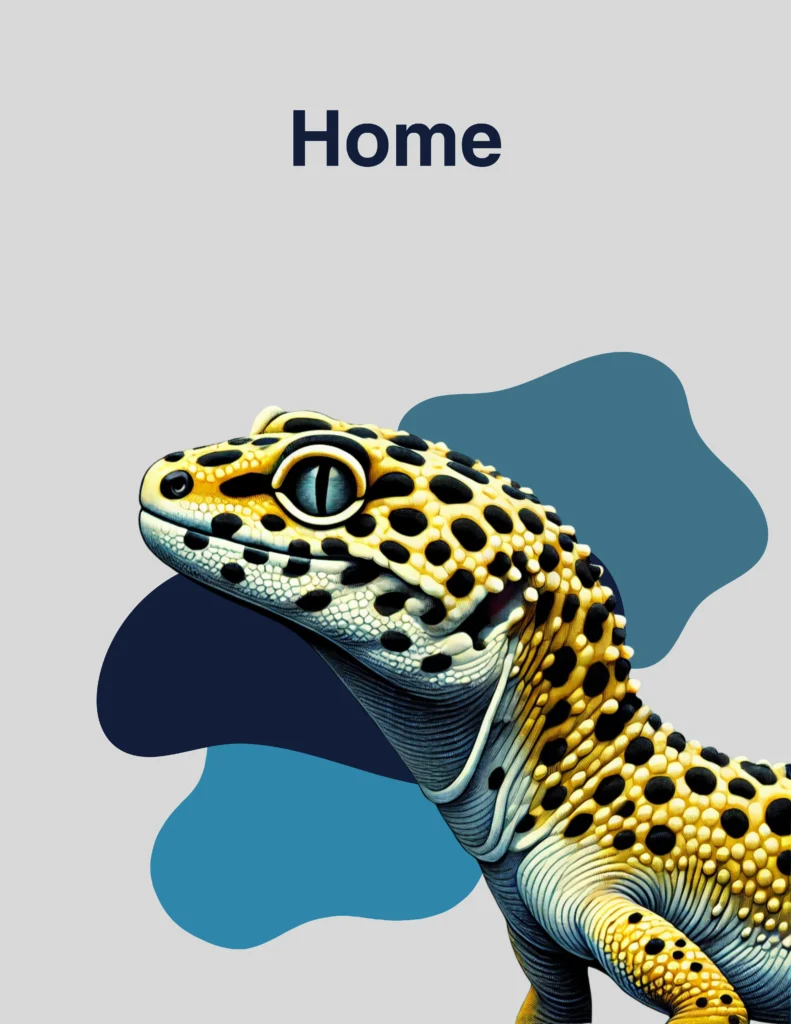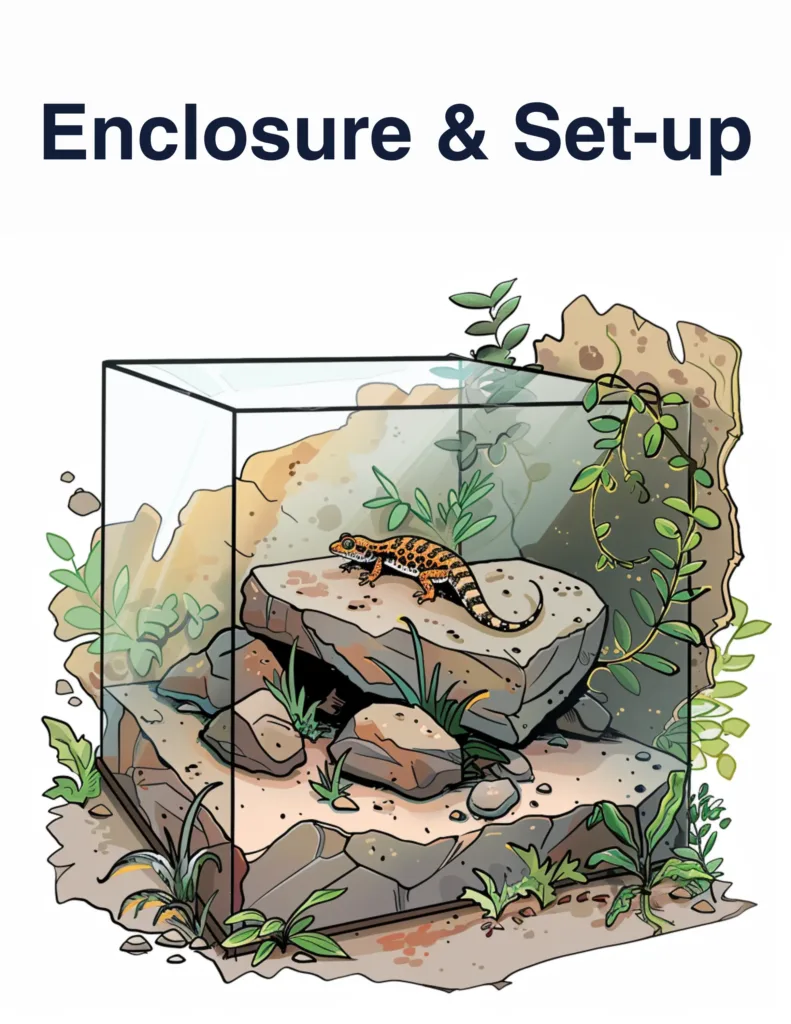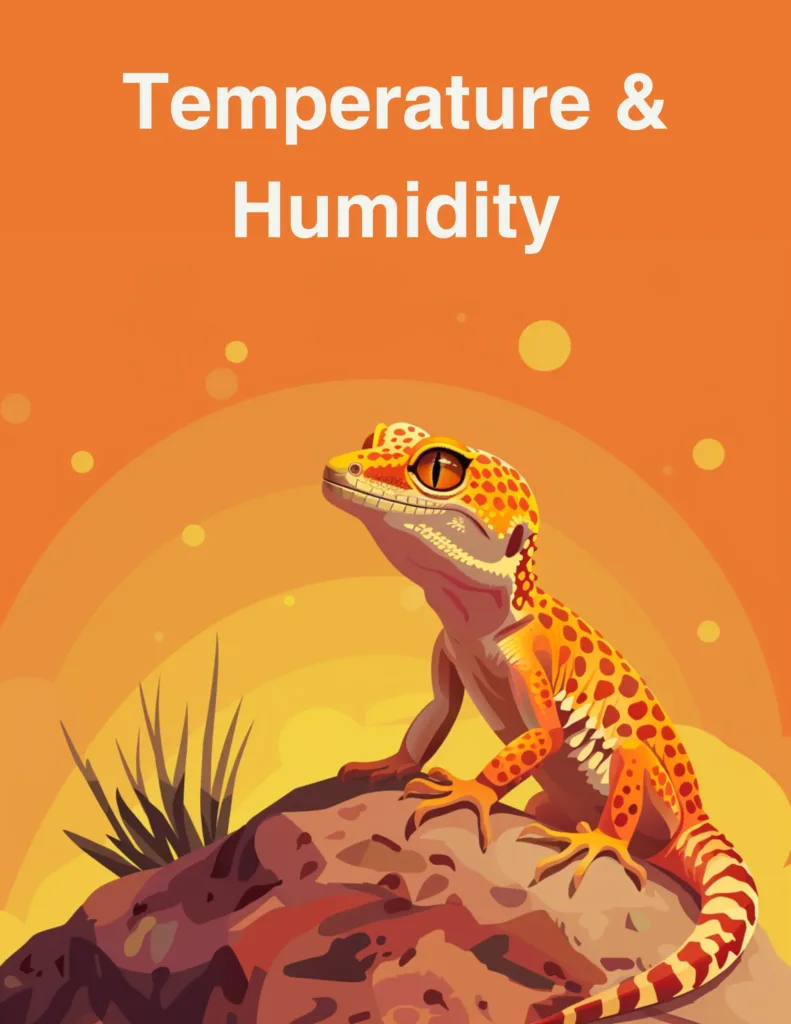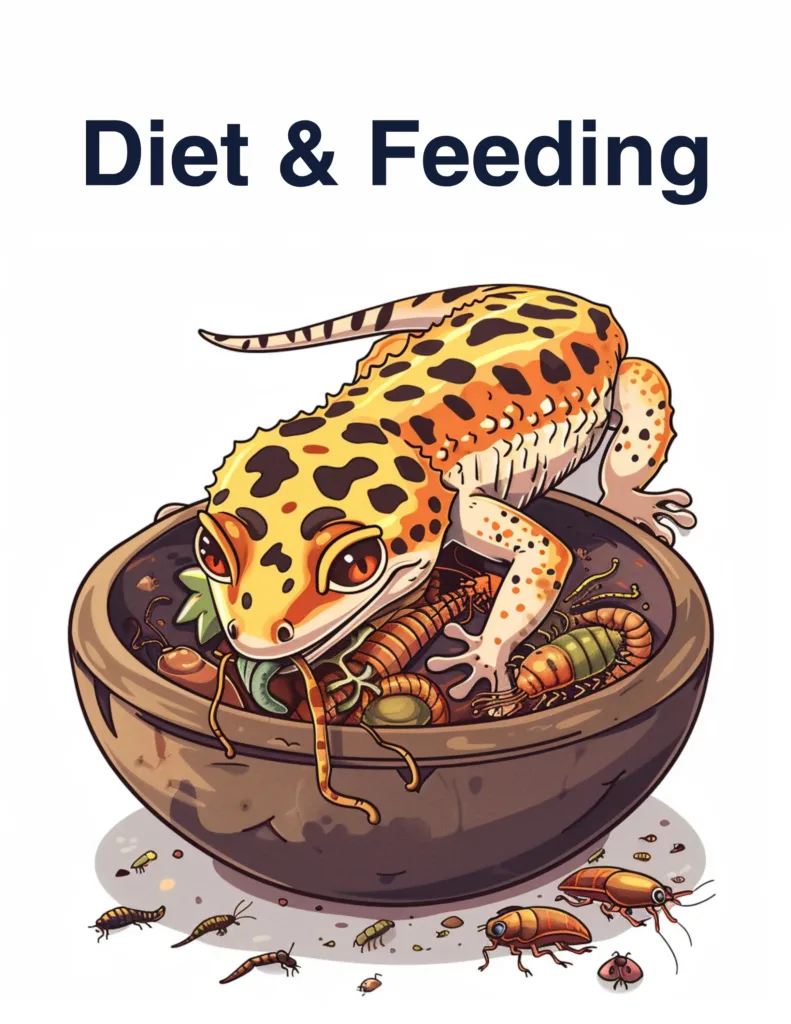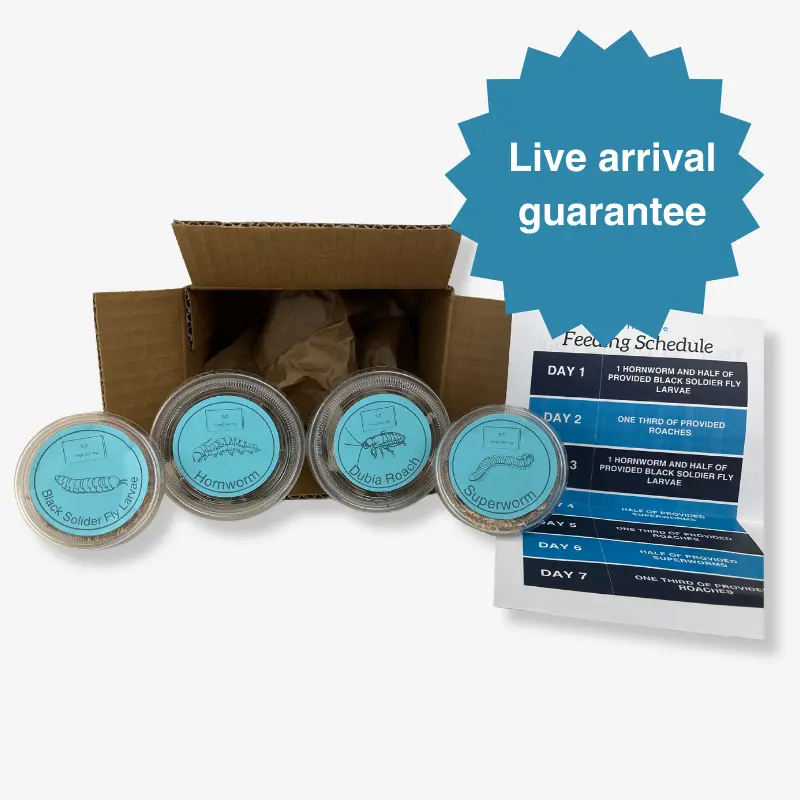
Leopard Gecko Diet and Nutrition
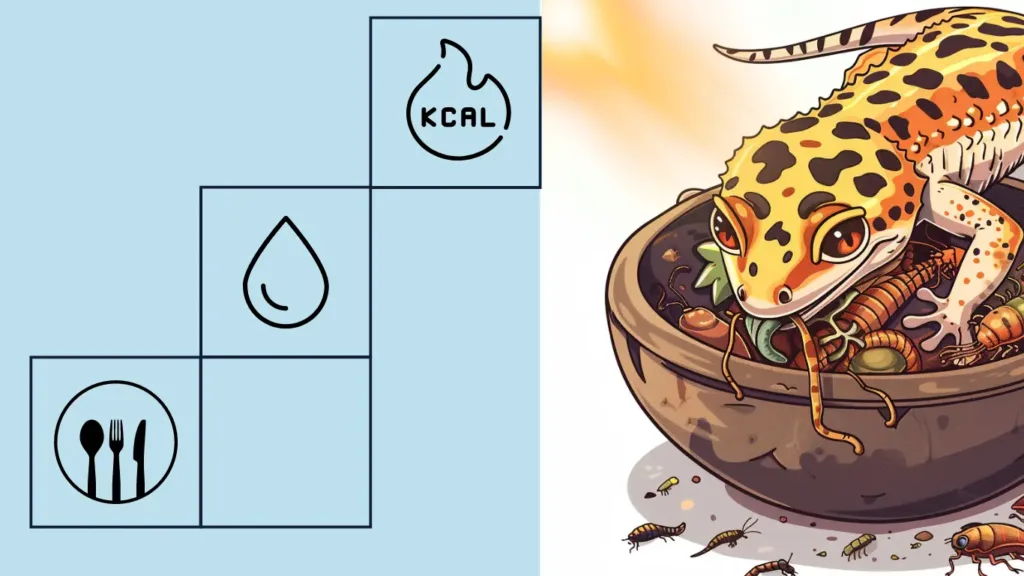
On This Page
Diet is one of the most important parts of good care, and it’s also the least understood by many so called “experts”. On this page we’ll explain why diet is so important for leopard geckos, and how to feed your pet the diet they need to thrive. We’ll answer the important questions:
- Why is diet important for leopard geckos?
- What should I feed my leopard gecko?
- What do leopard geckos eat in the wild?
- How do I know if I am feeding my leopard gecko too much or too little?
- Where should I get bugs for my leopard gecko?
- Do I need supplements for my leopard gecko?
Why is diet so important?
Poor diet and nutrition will almost always lead to nutritional disorders, such as secondary nutritional hyperparathyroidism (SNHP). Most owners will know this disorder by a different name: Metabolic Bone Disease. The resulting symptoms are the source of a great deal of suffering for pets and their owners. See the below image which shows an advanced case of MBD.
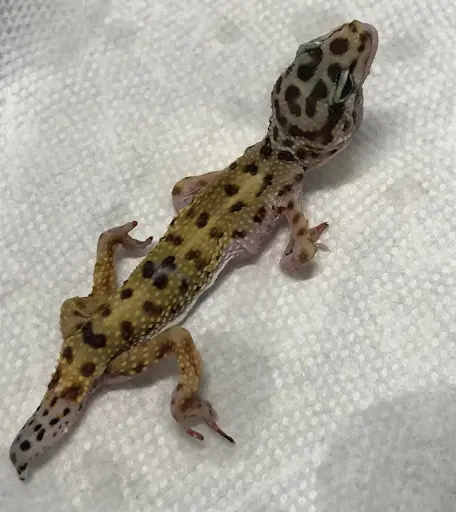
Nutritional disorders are entirely preventable when proper diet and nutrition is offered to our pets. The issue is, getting this right can be somewhat complicated. With so many poor information sources available on diet, nutritional disorders have plagued the world of reptiles.
By following this guide, you’ll ensure your pet can avoid common nutritional disorders and live a long and fulfilled life. If you’re only going to read one part of the guide, read the core nutritional principles below.

What’s with the ?
Science and accuracy matter. We’re not self proclaimed experts. Everything here is cited and attributed to well educated and experienced researchers, vets, and non-profits. Click the check to see the source. Don’t trust any site that does it differently.
Core Nutritional Principles
Diet Diversity
Experts agree on one thing: A good pet diet always has a very wide variety of nutrient sources, for leopard geckos this means many different insects. Feeding one or two insect types is not sufficient and is bad care.
Don't Overfeed
We need to be careful not to overfeed, as obesity is a serious health risk. Your pet will almost always seem 'hungry'. Follow a better system for determining the right food amount like the one outlined late in this article.
Not All Feeder Insects Are Created Equal
Which ones you use, and where you get them directly impacts the nutrients your pet receives. Using supplements to modify the nutritional content is a common strategy we’ll break down in more depth later.
Insects Only
Leopard Gecko's only eat insects (and other prey items). We should feed captive leopard gecko's a diet of only insects, no greens or plant matter is needed.
What do leopard geckos eat in the wild and what does it teach us about proper captive diet?
As with other areas of proper care, to offer the right diet and nutrition we have to look at the wild behaviors and needs of leopard geckos. When analyzing the available research, here’s what we know:
- Leopard geckos are primarily insectivorous (an animal that only eats insects). More mature individuals do occasionally eat other prey items such as other geckos, snakes, and newborn mice.
- They are opportunistic hunters, and eat a very wide variety of prey items including beetles, grasshoppers, spiders, scorpions, and centipedes. They will eat essentially anything they come across that they can overpower and fit into their mouths.
- They hunt using a stalk and ambush technique. As a result, they will usually only seek out moving prey items, ignoring unmoving or dead options.
Core Nutritional principles explained (based on the behavior of wild leopard geckos):
-
- We need to feed our pets a variety of prey items. By feeding our pets a diverse diet containing many different insect types, we ensure they are exposed to a broader range of nutrients (feeder insects have very different nutritional contents). In turn, this helps them avoid nutritional disorders.
- We need to be careful to not overfeed. Leopard geckos will eat basically anything they are able to, meaning they will not stop eating and will always seem ‘hungry’ to owners. As we’ll get into later, our geckos do not need much food to remain healthy. Too much food can very easily make your pet obese, which comes with a number of health problems.
- We should select the right insects to include in our pets diet, both the type of insect and where we get them. Feeder insects are not all equally nutritious. Some feeder insects just aren’t as nutritious as the rest. Crickets are an excellent example. Although widely used, they are lacking in some critical nutrients like Vitamins A & D, and Calcium. Additionally, proper insect care (and gut-loading) is extremely important for the overall nutritional content of the insects themselves. You need to get feeder insects from reputable sources, and ensure they are provided adequate nutrition prior to feeding them to your pet.
Skip the research.
Feed a great diet.
When you join ReptiBites, your pet gets an optimal diet delivered right to your door. Each package contains 4 insect types that are carefully measured by weight.
Simply put, it’s an easier and healthier way to feed your pet.
What insects should I feed to my pet?
TLDR: Dubia roaches, superworms, hornworms and Black Soldier Fly Larvae are our favorites. As stated above, feed your pet ALL of these insects, don’t just pick one option.

Solider Fly Larvae
Solider Fly Larvae
Promotes bone health and development
Promotes bone, muscular and neurological health
Enables proper calcium absorption

Dubia Roach
Dubia Roach
For muscle
growth and maintenance
For everyday activity and movement
Promotes bone, muscular and neurological health

Superworm
Superworm
Promotes bone health and development
Easy to feed and enjoyed by most
Protects nerve and muscle tissue

Hornworm
Hornworm
Keeps your pet hydrated
Promotes bone health and development
Easy to eat and digest
Deep dive into insect options (do you have other choices?)
As we stated above, feeding your pet a wide variety of insect options is far more important than the individual insect choices. 1-2 food types is just not sufficient. We recommend using AT LEAST 4 separate insect types. Here are our favorites:
- Dubia Roaches: Dubia Roaches are well regarded among many owners for good reason. They are a solid source of protein, and offer a variety of minerals even when produced with a suboptimal diet. Presumably, proper gut loading and feeding would only improve their micronutrient content.
- Black Soldier Fly Larvae: Commonly called BSFL, Black Soldier Fly Larvae are one of the best feeders around. They are very high in calcium, Magnesium, Potassium, and have higher than average amounts of vitamin D3 and vitamin B12. From a macronutrient perspective, they are well balanced providing both protein and dietary fat.
- Hornworms: High in both water content, and calcium, Hornworms are an excellent addition to ensure your pet doesn’t become dehydrated and gets more calcium.
- Superworms: Superworms have gotten a bad reputation for no reason. They are high in protein, Vitamin E, various amino acids, and overall energy content for your pet. They can contain a higher dietary fat content than other feeder insects. Put simply, there is more energy per gram of superworms, so we just need to feed them less.
Other options (that we don’t like as much)
- Crickets: Crickets are very popular, but only because they are easy to produce. There is nothing special about their nutritional content. They are high in protein, which is great, but are also fairly low in other key nutrients. They present other issues apart from their poor nutritional breakdown: they can jump, are rather stinky, and some owners have observed them biting their pets.
- Mealworms: Mealworms are also very popular, and are very similar nutritionally to superworms. However, superworms are reported as having less phosphorus and seem to in general respond better to proper gut loading. Mealworms aren’t bad by any means.
- Waxworms: Waxworms aren’t a terrible option, they just don’t compare well to other options in nutrient levels.
- Wild caught insects: Although this can be a really great way to increase the diversity of prey items your pet gets, due to the unknown origin we see it as possibly risky. The chance of these insects carrying pesticides or parasites is hard to quantify. Additionally, because we cannot control the diet of insects captured in the wild we’d also have concerns over their true nutritional content. Full disclosure, we sell feeder insects. So there may be a conflict of interest in this point as much as we’ve tried to keep it objective.
Final Point
The actual insect choices that make it to your pets diet are less important than having diversity. No diet is complete with just one insect type and thus most of your focus should be on feeding many diverse feeders rather than obsessing over which feeder insects have what nutrient profiles.
How much should I feed my pet?
Many sources provide varying techniques to feed your pet the appropriate amount. You might have heard of feeding your pet as much as it will eat in a certain timeframe. Or a specific recommendation to feed a certain number of insects per day.
These recommendations aren’t flat out wrong, but in the modern age of reptile care we have better tools for the job. The use of Metabolic Rate research enables us to more accurately estimate how much food your pet needs. Such methods are becoming more and more common among the best reptile vets in the country. The below tool utilizes the latest knowledge of the field to estimate required food quantity per day using the body weight of your leopard gecko.
Leopard Gecko Calories Calculator
Results
| Insect Type | Estimated Quantity Needed | Total Weight (grams) |
|---|
Cheat Sheet: Don’t know your gecko’s weight?
You really should! It’s a great metric to keep an eye on that can give you a heads up if something isn’t right with your pet. That said, here’s a general estimate:
Hatchlings (0-2 months old) – Around 5 grams
Juveniles (3-6 months old) – Around 20 grams
Sub-Adult (6-18 months old) – Around 35-40 grams
Adult (18+ months) – Usually 50-60 grams
How does this tool work and why can I trust it?
Why can I trust it?
Fair warning, this is going to get technical.
This tool makes use of Field Metabolic Rate (FMR). This refers to the energy requirements of animals in their wild habitat. Put simply, how much energy does an animal need to do the daily activities required for survival: moving around, hunting, growing, digesting food, etc. Thus, how much food do they need to eat to meet this energy requirement.
To our knowledge, leopard Geckos have not been studied directly in regards to their energetic requirements. We are however VERY confident in the use of the available research when applied to leopard geckos. This is for a couple reasons:
- There are strong trends among energetic requirements among species of the same families. Ie, reptiles show much less variation in energetic needs when compared to each other (when mass is accounted for), then when compared to other animal families like mammals.
- Habit environment appears to be a strong indicator in the difference of energetic needs in inter-family analysis. For example, desert reptiles are consistent in their energetic needs when accounted for weight.
- Close relatives of the leopard gecko HAVE been studied in regards to their energetic needs. Based on the above two points, this data should predict the energetic needs of leopard geckos with a very high degree of accuracy.
The Math
With this out of the way, here’s the math explanation of our prediction tool:
We start with the prediction equation outlined in a summary of a wide range of known FMR data and their applications.
kJ/day = a(g body mass)^b
To explain, ‘a’ and ‘b’ are constants, basically just a set number that has been calculated to provide us with an accurate estimation when used together.
Then, we insert the right constants provided by the summary for Scleroglossans (taxonomic grouping that contains geckos and other small lizards) which is the best approximation for the leopard gecko.
kJ/day = 0.177 (body mass in grams)^0.935
A couple more steps. This equation estimates the FMR of a wild animal. One of the most prolific authors in the field of metabolic rate research estimates captive animals would need 60-70% of the energy their wild counterparts need if they are very active and as low as 20% if they are not active at all and are not maintaining a proper internal temperature. So we’ll discount our equation by 65% to ensure it’s appropriate for captive animals.
kJ/day = [(.177*(weight in grams)^.935)*(.65)]
As it stands, this equation calculates the energy needed in Kilojoules (kJ). Calories is a more standard unit for nutrition related calculations in the United States, so let’s switch out the unit to calories by dividing the whole equation by 4.184.
The Final Equation:
Calorie Needs per day = [(.177*(weight in grams)^.935)*(.65)]/4.184
Now let’s check our math. With this equation in hand, we’ll estimate an adult leopard gecko weighs about 60 grams. This means they need 1.26 calories a day by our estimation.
We can easily transfer this caloric value into insect weights using research on the nutritional content of feeder insects. A word of caution here, every insect supplier seems to have different definitions of insect sizes. A medium dubia roach from us probably isn’t the same as it is from another supplier. So we’ll use weight and an estimation of quantity:
1.26 calories a day is
- .75 grams of dubia roachs, or about 9 small dubias
- 2 grams of hornworms, or about 2 smalls or 1 large hornworm
- .65 grams of superworms, or about 9 small superworms or 3 medium superworms
- .65 grams of BSFL, or about 10 medium-large sized BSFL
The above of course is just an example. This matches closely with rough estimations provided by veterinarians.
Now that you know how it works, go use the calculator for your pets specific weight!
One final note: tools like this are always of course just a recommendation. Keep a close eye on your pet and adjust their feeding quantities according to their weight. All we aim to do with our calculator is give you access to the latest science regarding proper energy and feeding practices.
Does this calculator work for a growing animal?
It does! Interestingly, research so far suggests that neonate (baby and growing animals) reptiles do not have a variance in their FMR when mass is accounted for. Put simply, smaller animals seem to need a proportionate energy to larger animals. The myth that young animals need lots of food to grow is likely based on captive reptiles being overfed and growing far more rapidly than their wild counterparts. It does seem to be true that overfeeding at a younger age is probably less destructive to an animal’s health than it is as their growth slows. This said, it’s preferable to grow them at their natural rate, and completely disregard anyone who says you’re ‘starving’ your animal. Feeding the correct quantity from a young age will increase the likelihood your pet avoids obesity and lives a healthy and full life.
How do I know if my animal is over/under weight?
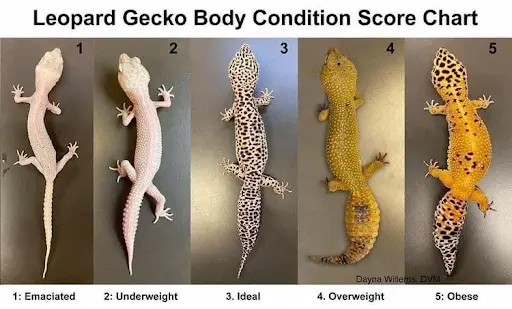
Follow the above guide to get an idea of your pet’s weight. If your gecko is underweight, feed one or two extra bugs per feeding than our calculator recommends. If it’s overweight, feed one or two less or skip a 1-2 feedings per week all together.
How often should I feed my leopard gecko?
Now you know what and how much to feed your gecko, how often should you do it?
Ultimately, this is up to you. The most natural approach would be to feed your pet a small meal every day (probably toward the evening when they’d naturally head out to hunt).
Some advocate for a very large feeding once or twice a week. While there’s likely nothing wrong with such a schedule, it seems unlikely this would match the behavior of a wild gecko unless they managed to successfully consume a large meal like a newborn mouse.
What supplements does my leopard gecko need?
The use of supplements for reptiles is a much more nuanced topic than most make it out to be. We’ve done our best to present an objective and accurate assessment of supplementation, and whether or not you need to be giving them to your pet.
We do suggest you use a calcium and multivitamin supplement. When used in moderation, the potential for downside is fairly low. If your pet receives a high quality diet, supplements are able to have their intended effect: a secondary ‘insurance policy’ to make sure your pet gets the nutrients they need.
Due to the challenges facing proper and effective supplement use it would be entirely foolish to rely on them as a mainstay of your pet’s nutritional plan.
The challenges with Supplements
Many care sources out there preach the benefits of supplements without any regard for the challenges surrounding proper supplementation use. Frankly, it’s not much of a surprise given the widespread commissions offered by supplement sellers. We have no such agreements, and our only objective is to help owners like you do what’s BEST, not what makes us the most money.
Here’s a quick fact: supplements intended for human consumption are not regulated by the FDA the same way drugs and medicine are. Supplement companies are solely responsible for ensuring their products are safe, correctly labeled, and contain what they say they contain.
That’s for human supplements. There is absolutely no regulation we’re aware of for reptile supplements. As a result, the quality of commercial supplements varies dramatically. We are placing our trust completely in the hands of their manufacturers to produce consistent and healthy vitamin and nutrient levels in their products.
Additionally, the way in which we use these untested supplements makes the process even less scientific. Many supplements are dusted onto prey items. This adds additional variables that determine how much of that supplement our pet actually gets. Does it stick appropriately to the insect? How long is it until the insect is consumed (many insects will groom themselves clean)?
To make matters worse, we do not have the nutritional science of most reptiles nailed down: we do not know their exact nutrient needs. This adds difficulty to proper use of supplements. Many vitamins and nutrients are either toxic in excess or inhibit the ability of your pet to absorb other required vitamins and nutrients. We need to be careful not to over do it.
In short, the challenges with supplements are as follows:
- Quality is untested and likely varies by batch and brand
- We are unaware of the individual nutrient needs and limits, making under and over-supplementation possible
- Common techniques such as dusting introduce another set of variables that determine how much of the supplement your pet actually gets
We are aware of various sources who attest that they have raised extremely healthy reptiles (in this case lizards as snakes require no supplementation) with zero supplement usage at all. They did however utilize extremely varied diets that included vertebrate prey.
With this all covered, virtually all veterinarians and researchers agree altering the nutritional content of our pets diet, usually via supplements, is a requirement.
Using leopard gecko supplements: why do I need them and what should I use?
As stated above, supplements provided directly to our pets, are imprecise at best and introduce a number of challenges. This said, they are critical because feeder insects are commonly low in the following nutrients:
- Calcium: Use a calcium dust supplement on the insects provided to your pet x2-x3 a week. Some will suggest dusting every feeding. If you’re feeding a diverse diet with high calcium feeders like the one outlined above, you’re likely already around a .7-1:1 calcium to phosphorus ratio. It won’t take much supplementation to get to the industry standard recommendation of 2:1 calcium to phosphorus. A quick reminder: over-supplementation is certainly possible and can cause a number of issues. As far as product choices, ReptiCalicum by ZooMed is a popular choice. If you use UVB, make sure you get the supplement without vitamin D3. If you aren’t using UVB (you should be), get a supplement with vitamin D3.
- Vitamins A and E, thiamin (Vitamin B1), and other nutrient compositions : Use a multivitamin that contains vitamins E and B1, as well as beta carotene (which can be converted to Vitamin A). You’ll find most options contain a wide variety of other minerals, vitamins, and nutrients. Use this once a week at most. If you’re feeding an appropriate diet, 1-2x a month is better.
An alternative to leopard gecko supplements: what about gut loading?
We’ll preface this section by saying you should still use supplements. As imprecise as their use is, more research and testing is likely required before we can rely on gut loading exclusively.
TLDR: Feeding insects a really high nutrient diet in turn passes more nutrients off to your pets. It seems to be more reliable and mathematical compared to ‘dusting’. We use the same techniques outlined by the research here at ReptiBites to maximize the nutritional value of our feeder insects before you feed them to your pet. We aren’t aware of another retailer that does that. With more testing and research, we think this technique can entirely replace dusting supplement use.
Why do we think gut loading could be a better alternative to traditional supplements?
Well for starters it’s far more natural. Reptiles evolved in habitats that require zero supplementation in their diets. Introducing manufactured, untested, and unregulated supplements to your pets diet is clearly suboptimal, albeit required at the time of this writing if you source your insects from a variety of sources.
Secondly, it seems it would improve nutritional consistency of the diet we give to our pets. As outlined above, the use of dusting styled supplements is rather imprecise. Gut loading on the other hand appears to be more controllable and consistent. By feeding insects a high nutrient diet, the nutrient levels are more predictable than giving our pet an undosed level of an untested supplement.
Finally, it simplifies proper care. It moves responsibility of proper insect development and growth to the producer of those insects (who have the resources and know-how to manage this responsibility), not on the owner of the animal who is expected to guess at the proper supplementation levels.
For these reasons we follow the latest available research on proper gut-loading for our feeders here. At the time of this writing we are planning our own testing and experimentation to continue to improve the gut-loading process.
Does my leopard gecko need water?
Reptiles are a bit different from other mammal pets in that they source a lot of their hydration from their prey and food. It’s for this reason, we suggest insects like the hornworm that have high water content. This said, offering your pet water in a water dish is a non-negotiable. Providing such access gives your pet the option to drink water when needed.
Provide your leopard gecko with a shallow water dish that is not deep enough for them to be fully submerged in. Less than an inch of water height is fine. Replace this with fresh water every couple days.

